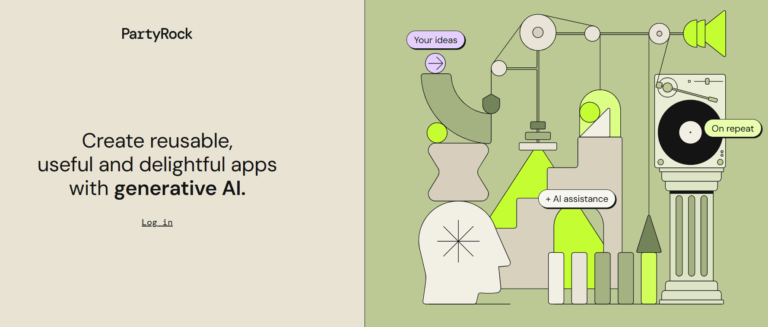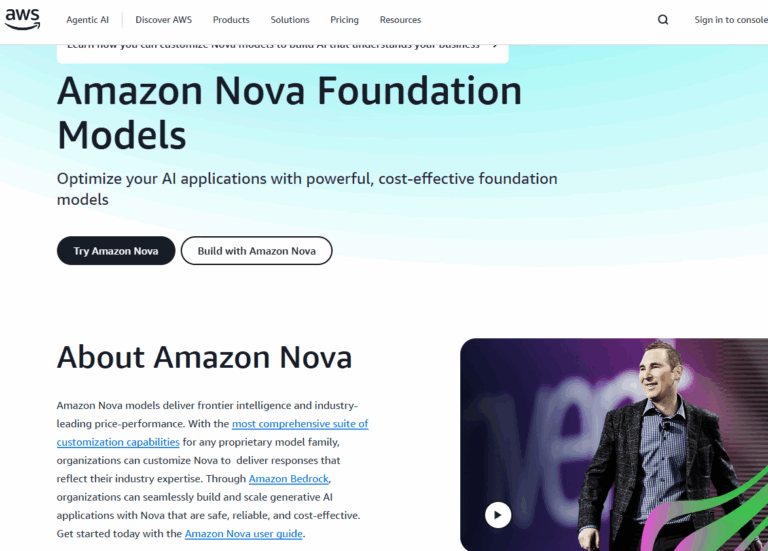Let’s be honest: AI implementations often struggle not because of the technology itself, but because of how we communicate with it. And in AI, by “communicate,” we mean prompts.
As generative AI (GenAI) becomes foundational across digital workflows, the way we design our prompts is now as critical as the models’ capabilities themselves. Teams that deploy even the most cutting-edge models can find themselves getting less-than-ideal or inconsistent results. The root cause usually comes down to how the underlying prompts are structured and managed.
On AWS, well-engineered prompting isn’t just about crafting a clear question or instruction. There’s an entire layer of infrastructure that can amplify prompt performance to break the traditional trade-offs between cost, speed, and accuracy. Leverage the ecosystem to its full potential, and you can design prompt solutions where you don’t have to compromise on any metric.
This guide walks you through AWS’s unique prompt acceleration capabilities that help you build optimized LLM applications—whether you’re prototyping in a no-code tool or running enterprise-scale AI in production—to get more value out of every token.
Getting Started: 3 AI Building Blocks
Understanding prompt engineering in AWS starts with recognizing that there is no one-size-fits-all: your approach depends on where you are deploying.
Fortunately, AWS has built what might be the most comprehensive generative AI ecosystem available today. At the heart of this ecosystem, you can find three main platforms (plus related tools), each serving different needs and skill levels:
1. Amazon Bedrock: Your Foundation Model Hub
Amazon Bedrock gives you API access to top-tier foundation models under a single, unified roof. Alongside the most popular third-party LLMs, Bedrock is the only place where you can access AWS’s own Amazon Nova model family.
With Bedrock’s managed infrastructure, prompt engineering is about maximizing each model’s strengths through structured inputs, taking advantage of built-in prompt templates, evaluation tools, and agentic workflows to scale those prompts consistently across teams.
2. Amazon SageMaker: Your Custom Model Powerhouse
Amazon SageMaker provides the infrastructure for building, training, and deploying custom models, enabling deeper personalization when you need it.
With Sagemaker’s custom pipelines, prompt engineering influences the end-to-end ML lifecycle. It shapes data labeling strategies, fine-tuning efficiency, and how you evaluate models before they go live. A well-crafted prompt here can improve the quality of training data, reduce bias, and directly boost the downstream accuracy of your custom LLM.
3. AWS PartyRock: Your No-Code AI Playground
PartyRock democratizes AI experimentation through no-code prototyping: Here, the only “code” is your prompt.
Within PartyRock’s interactive environment, prompt engineering defines the application logic, making this the perfect space to rapidly test, iterate, and refine prompt patterns before deploying them in Amazon Bedrock or Amazon SageMaker. Here, you can fail fast, learn quickly, and carry forward proven prompt strategies into production-ready pipelines.

What makes this ecosystem particularly powerful is its flexibility. You might start with an AWS PartyRock prototype, validate your concept, then seamlessly scale through Amazon Bedrock to enterprise deployment—all while maintaining consistent prompt engineering practices.
For more insights on this journey, AWS offers comprehensive resources on transforming your business with generative AI.
Amazon Nova Act and the New AI Agent Space
Deploy Generative AI on AWS with Effective Prompting
If you have also been deploying GenAI applications, you may have faced the classic trilemma of AI deployments: optimize for cost and sacrifice speed, optimize for speed and sacrifice accuracy, or maximize accuracy while watching costs spiral out of control. It feels like you’re always giving something up, right?
Amazon Bedrock’s API integration offers a different path forward. When you deploy solutions through Bedrock’s API, you’re essentially creating direct connections between your applications and foundation models through RESTful endpoints. Your prompts become API requests, model responses flow back into your workflows, and everything integrates smoothly with your existing infrastructure.
Within this infrastructure, AWS layers in advanced features that can quietly tip the trilemma in your favor. For prompt engineering, these are your two must-know infrastructure features in Amazon Bedrock:
- Prompt caching gives your AI system a memory.
Instead of reprocessing similar prompts from scratch every time, Amazon Bedrock stores frequently used prompt patterns and reuses them intelligently.
Consider all those times your application sends small variations of the same prompt. Maybe it’s generating product descriptions with boilerplate brand copy, or creating greeting emails with consistent formatting. With caching, you’re only processing what’s actually new, not the entire context.
The impact can be dramatic: AWS reports up to 90% cost reductions and 85% latency improvements for repetitive tasks.
- Intelligent prompt routing lets you pick your preferred model in real time.
Rather than sending every request to your most powerful (and expensive) model, the system automatically evaluates query complexity and routes accordingly to different models or model versions.
Simple tasks go to lighter models like Nova Micro, while complex analytical work gets directed to Nova Pro or other heavyweight models. The elegance of this approach really shines when new models are released: You simply update your routing rules and immediately start testing the latest innovations in production.
The outcome? You can move at the speed of GenAI innovation while controlling spend.

The best part is that all of this happens within AWS’s enterprise-grade security and compliance stack, which means your prompts, responses, and cached data benefit from comprehensive protection. We’re talking encryption at rest and in transit, IAM integration, and the compliance certifications that keep your security team happy even in regulated spaces.
By blending solid prompt design with these infrastructure features, you can chip away at all three corners of the trilemma at once.
Efficient Prompt Engineering on AWS
Sometimes the best way to understand these concepts is to see them in action. Here’s an example implementation that brings all these pieces together.
How Can Smart Prompt Engineering Transform Content Marketing Workflows?
Consider a marketing team using GenAI for blog drafts, social media captions, and email copy. They face common challenges:
- Monthly API costs running into hundreds of dollars
- Inconsistent content quality between generations
- Too many hours spent on post-editing
- 5-7 second response times slow down workflows
Here’s how efficient prompt engineering transforms their workflow:
- Restructuring prompts with consistent templates and clear output specifications immediately improves quality consistency.
- Implementing prompt caching achieves an 80% cache hit rate for recurring elements like brand introductions, standard CTAs, and email signatures that appear everywhere and otherwise would constantly get reprocessed.
- Through intelligent routing, simple tasks like tweet generation are moved to Nova Micro, while complex long-form content remains with Nova Pro for cost optimization.
- And, by tracking everything through Amazon CloudWatch and monitoring metrics like CacheReadInputTokens versus CacheWriteInputTokens, the team can prove value and keep fine-tuning this strategy.
What improvements could we expect in this scenario?
- Costs drop by 60%.
- Response times average under 2 seconds.
- Content quality becomes consistently high.
Pro Tip: AWS’s prompt optimization guide offers more ways to balance price and performance.
Gain Your AI Advantage Through Prompt Optimization
As we look ahead, it’s clear that success in enterprise AI requires mastering both the art of communicating with models and the science of optimizing the infrastructure around them. AWS has created a platform where both dimensions can reach production scale effectively.
Teams that develop expertise in both areas will build lasting advantages: faster implementations, improved cost efficiency, and reliable performance even as the technology landscape continues to evolve. With emerging capabilities like Amazon Bedrock AgentCore (currently in preview) enabling enterprise-scale multi-agent orchestration, the possibilities keep expanding.
Ultimately, prompt optimization is about unlocking the full potential and ROI of generative AI. Gaining your AI competitive advantage is not just about using AI: it’s about using it efficiently, effectively, and at scale.

